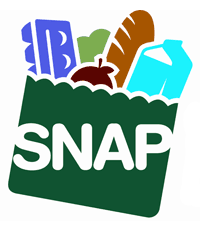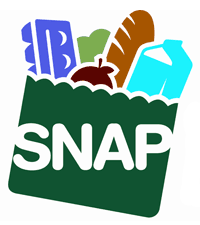 PROVIDENCE, R.I. – May 05, 2010 – More Rhode Islanders are receiving food stamps this month than ever before, and that number is expected to continue climbing in coming months. As a result, demand for the federally funded nutrition education programs provided by the University of Rhode Island is also at an all time high.
PROVIDENCE, R.I. – May 05, 2010 – More Rhode Islanders are receiving food stamps this month than ever before, and that number is expected to continue climbing in coming months. As a result, demand for the federally funded nutrition education programs provided by the University of Rhode Island is also at an all time high.
Nearly 73,000 Rhode Island households received assistance in April through the Supplemental Nutrition Assistance Program (SNAP), the new name for the federal Food Stamp Program. This is more than twice the number that the program supported in 2005, when 35,000 households received food stamps.
“The stigma of food stamps is easing, so more and more of those who qualify are applying for the benefits,” said Linda Sebelia, URI adjunct associate professor of nutrition who directs the SNAP education programs in Rhode Island. “It’s mostly the older generation that is still less likely to apply.”
Everyone who receives SNAP assistance is also eligible to receive free nutrition education to encourage them to choose nutritious foods and be physically active.
Sebelia and her staff of nine nutrition educators collaborate with 36 community partners to lead about 500 workshops each year at health centers, libraries, housing sites, senior centers, classrooms, community agencies and farmers markets. They also mail 200,000 nutrition education materials to households each year and respond to about 500 telephone inquiries. Posters placed inside and outside of RIPTA buses have also been used to further communicate their message.
“Our goal is to maximize people’s ability to choose healthy foods, and we try to do that in as many different ways as we can,” said Sebelia.
Increasingly, the SNAP education program is concentrating its efforts on fighting childhood obesity through activities at after-school programs, boys and girls clubs, recreation centers, and messages on Radio Disney. A 2008 study of the body mass index of children in Providence and Central Falls found that more than 50 percent were either overweight or obese, compared to the national rate of 33 percent.
“We’re responding to the obesity epidemic by incorporating physical activity into our programming for all age groups,” Sebelia said. “Physical activity and nutrition education have to exist at the same time.”
Funding for the SNAP nutrition education program comes from the Rhode Island Department of Human Services and the U.S. Department of Agriculture. In 2010, URI received $1.5 million, funding that was matched by the Rhode Island communities benefitting most from the program. URI has administered the program since its inception in 1980, when funding was just $2,000.
Sebelia’s team tracks the results of their program efforts, and she is optimistic that their outreach is having the desired effect.
“We have definitely been successful in our efforts to maximize nutrient density per dollar for our clientele,” she said.
The program continues seeking new ways to communicate tips for eating healthy, including an experiment this year using “digital photo receivers” with nutrition messages in health centers, the registry of motor vehicles and elsewhere. Yet Sebelia says that the most effective programs are those her staff conducts face-to-face with clients.
“We walk in with positive attitudes and smiles on our faces and we have fun while we talk about healthy eating, and they can’t wait for us to come back again,” she said.

